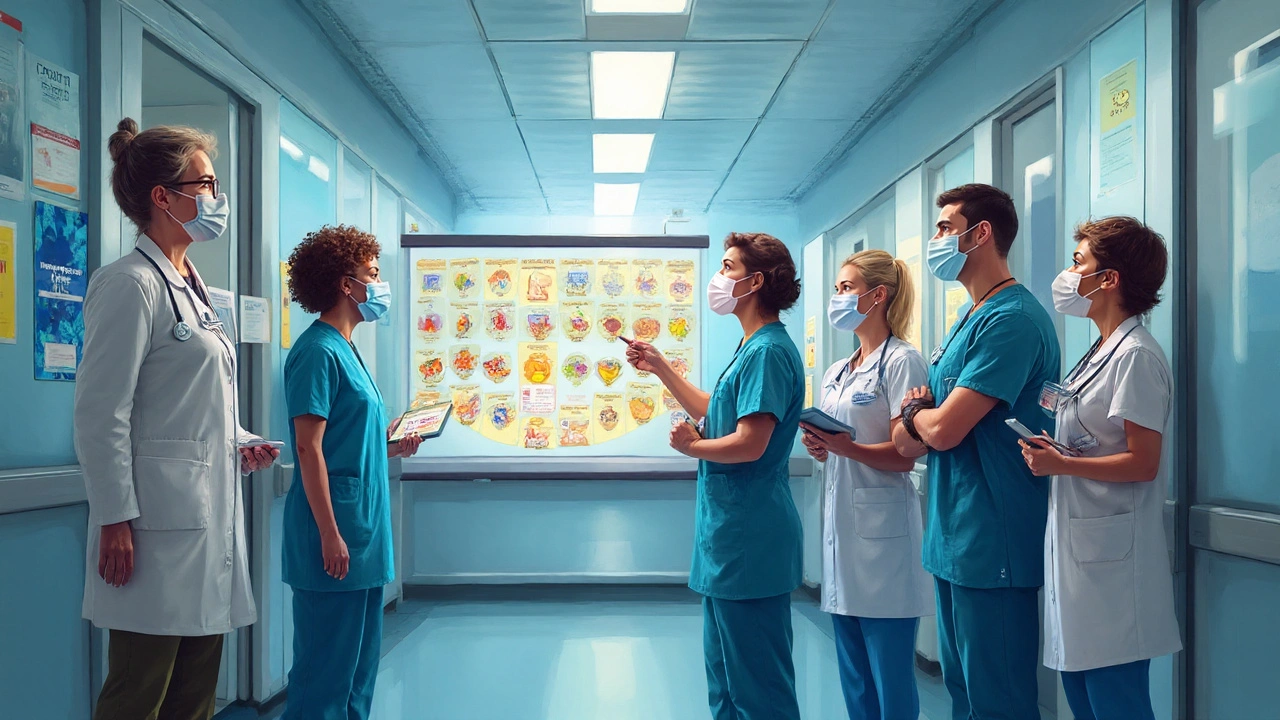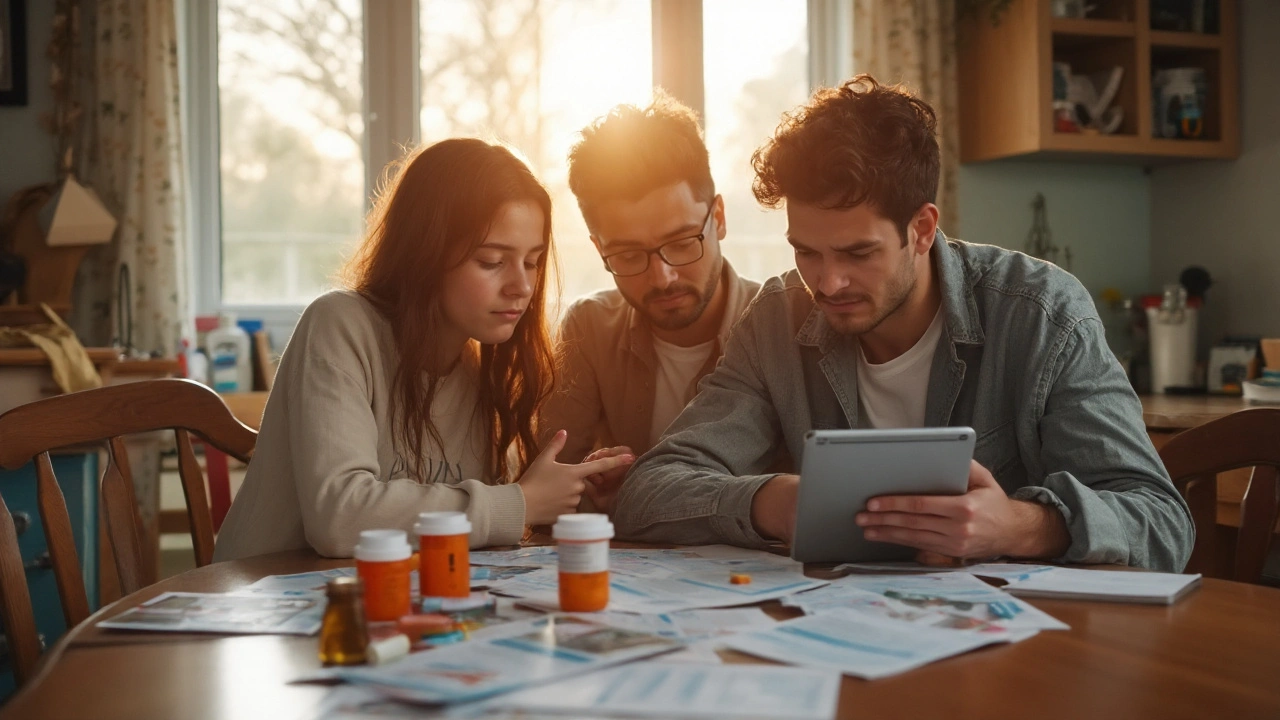In the not-so-distant past, catching a bacterial infection was scary—until antibiotics showed up. Suddenly, things like strep throat, infected wounds, or even pneumonia were beatable. People called them “miracle drugs” for a reason. Fast forward to right now: some of those 'miracle' antibiotics aren’t working anymore. Hospitals are seeing patients with infections that won’t go away, sometimes even after trying the whole pharmacy. Superbugs—bacteria that don’t care what you throw at them—are here, and they’re spreading fast.
What is Antibiotic Resistance, Really?
Doctors have warned about this for generations, so let’s break it down. Antibiotic resistance happens when bacteria change in a way that protects them from the drugs meant to kill them. Instead of dying, these tough bugs survive, multiply, and pass on that resistance to their buddies. Take a staph skin infection that used to clear up in a few days; now some strains barely flinch at common meds like penicillin or methicillin. That’s how MRSA (Methicillin-resistant Staphylococcus aureus) became a household acronym practically overnight.
The really wild part? Bacteria aren’t picky. If you use antibiotics for a toothache or a runny nose that’s not even caused by bacteria, you give harmless bugs a chance to become tough guys. They can spread their resistance genes to other bacteria, even ones that haven’t met the antibiotic yet. It’s like giving cold germs a viral “cheat code” against antibiotics. And once that resistance is out there, it usually sticks around. Penicillin resistance, spotted in the ’40s, never went away. Doctors had to invent newer, stronger antibiotics—and now we’re running out of options. Only a handful of new antibiotics have been approved in the last decade, and bacteria keep getting smarter.
Here’s a gut-punch stat: The CDC reported in 2024 that about 2.8 million Americans get an antibiotic-resistant infection each year. Roughly 35,000 people die from it. To put that in perspective, that’s more deaths than car crashes or gun violence in some years. The World Health Organization calls antibiotic resistance one of the biggest threats to global health, and they’re not exaggerating. If we keep heading this way, simple infections could become deadly again.
How Did We Get Here? Causes and Spread of Resistance
It didn’t happen overnight, and it’s not just about people taking too many pills. Start with how easy antibiotics are to get. In some countries, you don’t even need a prescription. People end up using them for headaches, colds, or viruses—stuff antibiotics can’t fix—to “be safe.” Whenever you take antibiotics and they’re not needed, a few leftover bacteria survive and adapt. The next time they meet that antibiotic, they’re ready. It’s like teaching bacteria to survive bootcamp.
Hospitals are part of the story too. They’re packed with sick people, bacteria, and—let’s be real—a decent amount of panic and stress. That’s a breeding ground for resistant bugs, especially when cleaning routines slip, staff are overworked, or patients don’t finish their meds. Suddenly, infections pop up that even the best hospital drugs can’t kill.
Another piece of the puzzle is agriculture. Around 70% of all antibiotics sold in the US are actually used on farm animals—cows, pigs, chickens. Why? Sometimes it’s to treat actual illness but often, it’s to make animals grow faster or prevent sickness in crowded barns. The trouble is, resistant bacteria from these animals can make their way to people through undercooked meat or even water supplies. Next thing you know, a burger becomes the start of a superbug chain.
Let’s not forget about travel, either. Hop on a plane to any country in the world, and you might carry resistant bacteria back home without even knowing it. That’s how resistant strains like NDM-1—first found in India—showed up in the UK, the US, and pretty much everywhere else within a couple of years. Bacteria don’t need passports, and they love airplanes.
| Antibiotic-resistant bacteria | Year First Reported | Resistant To | Annual US Infections |
|---|---|---|---|
| MRSA (Methicillin-resistant S. aureus) | 1961 | Methicillin, Penicillin, others | ~119,000 |
| CRE (Carbapenem-resistant Enterobacteriaceae) | 2008 | Carbapenems, multiple classes | ~13,100 |
| VRE (Vancomycin-resistant Enterococci) | 1988 | Vancomycin | ~54,500 |
| MDR-TB (Multi-drug resistant Tuberculosis) | 1990s | Isoniazid, Rifampin, others | ~8,900 (US); ~500,000 worldwide |

Why Should Anyone Care? The Everyday Impact
Right now, antibiotic resistance might sound like something you hear about on the news, not in real life. But think about a simple cut that gets infected, a routine surgery, or getting your wisdom teeth out. All of those need reliable antibiotics to prevent or treat infection. Ever had a urinary tract infection or sinus infection? Without working meds, pain can turn into something way worse—sepsis or kidney failure, for example.
And here’s the scary bit: Every day, more bacteria join the resistance club. It’s not always dramatic, but that sore throat or skin rash not healing the way it used to? Could be a hint something’s changing. Cancer treatments, organ transplants, and even childbirth all rely on antibiotics to keep infection at bay. If resistance keeps climbing, a future with routine medical procedures that suddenly turn risky isn’t some far-off dystopia—it’s a real threat.
Pocketbook problems are real, too. Treating drug-resistant infections often takes longer and costs a fortune. Sometimes you need hospital stays, special isolation wards, or second and third-choice antibiotics that cause more side effects. One wild fact: a 2023 study out of Johns Hopkins showed that treating resistant infections in US hospitals added more than $5 billion in healthcare costs yearly. Families feel that hit when insurance doesn’t cover the extra days or rare drugs needed.
Kids and seniors get hit hardest. Their immune systems aren’t as strong, so when antibiotics don’t work, things get dicey quickly. And on the global front, low- and middle-income countries struggle even more, as they may have fewer options and face more counterfeit or unregulated meds. It creates a vicious cycle that’s hard to break.
Tackling the Resistance Crisis: What Can You Do?
Feeling powerless? Don’t. The good news is that everyday choices can actually make a real dent in antibiotic resistance. First off, don’t pressure your doctor for antibiotics if they say you don’t need them. Sinus infections, colds, and the flu are usually viral, so antibiotics won’t help. Trust that your body can fight off most bugs with rest, fluids, and time. Only start antibiotics when a healthcare provider says it’s the right call.
You’ve probably heard this advice before, but it matters: Always finish your full course of antibiotics, even if you feel better before the pills run out. Stopping early leaves a few tough bacteria alive inside your body, giving them a chance to learn and pass on resistance. Missing doses or skipping days is a no-go. Stick to the plan.
Practice pro-level hygiene. Wash your hands with soap and water after bathroom visits, before eating, and whenever you get home from public places. That tiny habit stops bacteria from spreading—including the resistant varieties. If you’re getting surgery or any procedure, double-check that your hospital follows infection-prevention rules; it’s your right to ask about things like hand-washing and sterile tools.
Food matters more than you’d think. Handle raw meat carefully; use separate cutting boards, cook meat until it’s well-done, and never let juices touch veggies or ready-to-eat foods. Whenever possible, buy meat labeled “raised without antibiotics.” That sends a clear message to producers about what customers want, and it could help curb unnecessary antibiotic use on farms.
Spread the word. Talk to friends and family about why it’s smart to save antibiotics for when they’re truly needed. Share real facts—not just scary stories. When someone close asks for advice, back up your tips with legit sources. If you’re traveling, think twice before bringing back antibiotics from overseas pharmacies. You never know what you’re really getting, and you could be fueling the resistance fire without realizing it.
- Always follow your healthcare provider’s instructions on antibiotic use.
- Never share or use leftover antibiotics; they’re not a one-size-fits-all fix.
- Get vaccinated (like flu and pneumonia shots) to reduce your need for antibiotics in the first place.
- Support research efforts by donating to or volunteering for organizations fighting resistance.
Policy and science need to step up too. Governments can regulate how antibiotics are used in medicine and farming. Hospitals can track infections better, and researchers can search for new ways to outsmart bacteria. But without regular people on board—folks at home, in the store, or even just chatting with their doctor—it’s an uphill battle.
So, yes, antibiotic resistance sounds like a big, scary global issue. But it’s also a personal one. Whether you’re sick, looking for dinner, or just washing your hands, small steps stack up to big change. And that’s how we keep tomorrow’s infections from becoming today’s worst nightmares.






